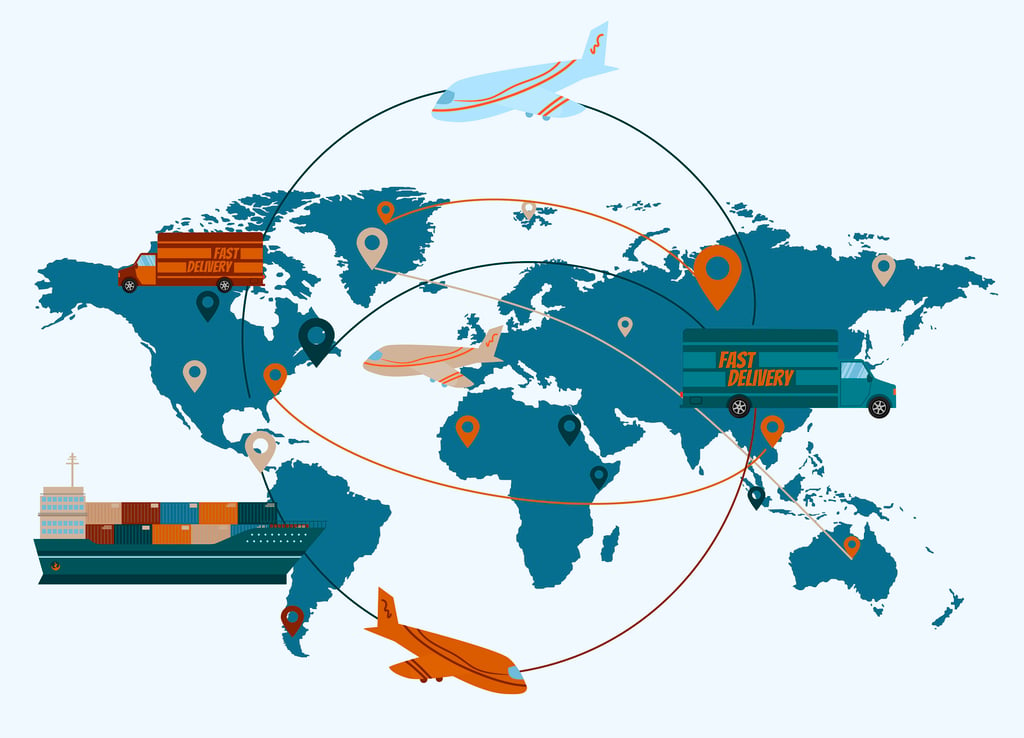Understanding Procurement Chain Management in Supply Chain Operations

Procurement chain management plays a vital role in modern supply chain operations, bridging the gap between sourcing, purchasing, and logistics. As organizations strive for efficiency, understanding the interplay between procurement and supply chain management is crucial for optimizing workflows, reducing costs, and achieving strategic goals.
What is Procurement in Supply Chain Management?
Procurement in supply chain management refers to the process of sourcing and acquiring goods and services required for business operations. It includes activities such as supplier evaluation, contract negotiation, purchasing, and ensuring timely delivery.
Key Components of Procurement in Supply Chain Management:
- Sourcing: Identifying reliable suppliers to meet operational needs.
- Negotiation: Establishing favorable terms with vendors.
- Purchasing: Placing and managing purchase orders.
- Delivery and Logistics: Coordinating the transportation of goods.
- Compliance: Ensuring alignment with organizational policies and regulations.
Procurement vs. Supply Chain Management
Although procurement and supply chain management (SCM) are interconnected, they serve distinct purposes.
Procurement:
- Focuses on acquiring goods and services.
- Involves strategic sourcing, supplier relationships, and purchasing activities.
- Aims to secure quality products at optimal cost.
Supply Chain Management:
- Encompasses the entire flow of goods and services, from raw materials to final delivery.
- Includes procurement, production, logistics, and inventory management.
- Focuses on efficiency and end-to-end visibility.
| Aspect | Procurement | Supply Chain Management |
|---|---|---|
| Scope | Strategic sourcing and purchasing. | Comprehensive flow of goods and services. |
| Focus | Supplier management and cost. | Operational efficiency and customer satisfaction. |
| Processes | Contract negotiations, orders. | Includes procurement, production, logistics. |
The Importance of Procurement in Supply Chain Management
Effective procurement is essential for a well-functioning supply chain. Here’s how it contributes:
1. Cost Optimization
Procurement ensures businesses acquire materials at competitive prices, minimizing overall supply chain expenses.
2. Supplier Relationship Management
Building strong partnerships with suppliers ensures consistent quality, timely delivery, and better terms.
3. Risk Mitigation
Proactive procurement strategies reduce risks like supply shortages, price volatility, and compliance issues.
4. Enhanced Collaboration
Aligning procurement with logistics, inventory, and production fosters seamless collaboration across departments.
Procurement and Logistics: A Critical Relationship
Logistics plays a key role in procurement chain management, as it involves the physical movement of goods. Procurement and logistics must work together to ensure timely delivery, cost efficiency, and minimal disruptions.
Key Roles of Procurement in Logistics:
- Vendor Coordination: Aligning procurement schedules with logistics capabilities.
- Inventory Management: Ensuring the right materials are available when needed.
- Transportation Planning: Selecting cost-effective and reliable shipping methods.
- Compliance and Documentation: Managing customs, tariffs, and regulatory requirements.
Supply Chain and Purchasing: Bridging the Gap
Purchasing is a subset of procurement that deals with transactional activities like placing orders and processing payments. Within the supply chain, purchasing ensures that materials and services flow smoothly to support production and delivery.
Purchasing Activities in Supply Chain Management:
- Issuing purchase orders.
- Managing invoices and payments.
- Tracking delivery timelines.
- Maintaining inventory levels.
Challenges in Procurement Chain Management
1. Supplier Risks
Unreliable suppliers can lead to delays and quality issues.
Solution: Implement robust supplier evaluation and monitoring tools.
2. Cost Fluctuations
Volatile market conditions impact procurement budgets.
Solution: Use analytics to forecast pricing trends and negotiate long-term contracts.
3. Lack of Integration
Disjointed systems hinder collaboration between procurement and other supply chain functions.
Solution: Invest in integrated software solutions for seamless workflows.
Tools for Procurement Chain Management
Technology plays a pivotal role in modernizing procurement processes and enhancing efficiency.
Key Tools in Procurement Chain Management:
- Procurement Software: Streamlines sourcing, purchasing, and compliance.
- Supply Chain Management Platforms: Offers end-to-end visibility and control.
- Sourcing Tools: Simplifies vendor selection and contract negotiations.
- Analytics Tools: Provides insights into spending patterns and supplier performance.
Future Trends in Procurement and Supply Chain Management
1. Artificial Intelligence and Machine Learning
AI-powered tools are transforming procurement and supply chain management by offering predictive insights, automating tasks, and improving decision-making.
2. Blockchain Integration
Blockchain technology enhances transparency and security in procurement, enabling tamper-proof tracking of transactions.
3. Sustainability Initiatives
Procurement and supply chain teams are increasingly prioritizing eco-friendly practices and sustainable sourcing.
4. Cloud-Based Solutions
Cloud platforms enable real-time collaboration across procurement, logistics, and supply chain teams.
How to Optimize Procurement Chain Management
- Align Procurement with Business Goals: Ensure procurement strategies support organizational objectives.
- Leverage Technology: Use tools like SCM platforms and analytics to streamline workflows.
- Enhance Collaboration: Foster communication between procurement, logistics, and production teams.
- Monitor Performance: Regularly evaluate supplier and procurement performance using KPIs.
Conclusion
Procurement chain management is a critical component of supply chain operations, driving efficiency, cost savings, and collaboration. By understanding the differences between procurement and supply chain management, businesses can align their strategies to achieve greater operational success. With the integration of advanced technologies and a focus on sustainability, procurement is set to play an even more significant role in the future of supply chain management.

